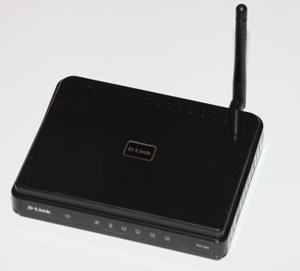How to make a wireless video surveillance system
Newer and better ways for video surveillance

People worldwide are searching for new and better ways to conduct video surveillance, and for a newer means to accomplish that goal. One very effective solution is wireless video surveillance.
As technology progresses, a number of computing tools (like cell phones, mobile devices, and other communications devices) are becoming wireless. Wireless video surveillance technology has proved that it will not only save time and money, but can help perform more efficiently.
DIY wireless video surveillance system
Generally, wireless connection is used when a wired solution is impractical or cost-prohibitive or you need the mobility only wireless can offer.
The most common applications for wireless video surveillance systems include:
- Providing security
- Preventing theft
- Collecting evidence
- Protecting property e.g. against vandalism
- Recording critical events
i.e. same as traditional wired surveillance, only with increased mobility and flexibility.
Installing any video surveillance system, including wireless, requires some basic common skills. It may be a good idea to know the basics of wireless cameras and digital video recording systems before you start. You can do it yourself, or you can hire someone to do it for you. We suggest you to follow these instructions to make a do-it-yourself wireless video surveillance system. Since you don’t have to run cables, you should be able to install the system with some basic tools in a day.
Components of Wireless Systems
A typical IP wireless video surveillance system has the following basic components:
digital cameras –> router –> servers –> monitoring stations (equipped with surveillance software)/operator monitoring the cameras.
- Servers: a server is a computer or device on a network that manages network resources.
- Monitoring stations: a remote monitoring facility that is usually established for observing camera output, monitoring alarm status, and any other surveillance goals. Cameras can be monitored from a personal computer (remote access), digital records can be viewed online, alerts can be broadcast to enhance situational awareness for first responders.
- Software: Video surveillance software will typically have a graphical user interface (GUI) that is user friendly and will easily adapt to a scalable video network system. Some surveillance software like Xeoma video surveillance software gives the cell phone user the ability to check cameras, rewind and view recorded footage, and even change frame rates while viewing any camera in the wireless network.

From words to actions!
Step 1.
The first thing in creating a wireless video surveillance system is to select the cameras and their locations. The latter should provide the maximum coverage over the desirable area.
- Indoor use: kitchen, side windows, stairway, or a bedroom at home, and the back of the store or warehouse, and the office if a business better monitored with hidden or nanny cams. Clock and boom box cameras blend in with a desk or shelf, Nanny Cams put inside toys or dolls look good mixed with the other toys in a child’s room. Exit sign or emergency light cameras need to be put near exits, and a hidden camera in pencil sharpener’s or shredder’s work well at an office or business.
- Outdoor use: fixed or pan-tilt-zoom (PTZ). Fixed cameras are generally more economical, and PTZ cameras can cover a larger area with a 360-degree rotation range, which help them replace several fixed cameras. Weatherproof or with built-in heaters or coolers are also some of the options that speak for themselves.
- Dome or bullet cameras are generally used for front and rear door monitoring.
- If you are going to monitor at night, you need a low light or night vision capable camera with infrared sensors around the lens to light up a dark area.
As may be well expected, any extra features of the cams add to the cost.
Position the camera lens at your subject, and simple drywall screws or mollies should mount the camera to the ceiling or wall, if no mounting screws are included. Bullet cameras have holes to secure it right to a wall or ceiling. Some dome cameras mount like a smoke detector; you put up a bracket, and the camera twists onto the bracket. Others require the dome to be removed first, and then you mount the camera to the ceiling and replace the dome.
You can go back later to adjust the position or lens.
Step 2.
It may well be the hardest or the easiest part – establishing wireless connection. You will need to set up
- router
- WAN (Internet access)
- WiFi (Wireless connection)
and connect cameras.
This is very much dependent on cam’s and router’s models. The best advice here might be to follow the instructions in respective documentation. Follow the instructions of your router to set up WAN (Internet access), Wi-Fi, specify SSID, security settings and administrative data.
Step 3.
The next step is to decide where you will put your monitoring/recording equipment. You need to find an office or area to set it up at your convenience. With the right receiving side, mainly depending on software, you can hook unlimited number of cameras and use unlimited possibilities of video surveillance.
Make sure the batteries in the transmitters of the cameras are fresh, you did not exceed the recommended distance from the camera transmitter to the receiver, or the receivers are plugged in and powered, correctly to what you intend to use to record.
Once you get your video feed, you can go back and adjust each camera if needed. It is also a good idea to record 5-10 minutes, then stop the recording and review the video with the software. Then try experimenting with other opportunities provided by software – like FTP server upload, text message notification – and see if it works. Make sure everything is working before you fully rely on your wireless video surveillance system.
Pros and Cons
What are the advantages and disadvantages to implementing a wireless video surveillance system? Here are some points to give you the insight into the reasons why a wireless solution can be such a powerful tool, and at the same time, some potential pitfalls that you should avoid.
Some of the many pros include:
- Lower cost: almost 80% less than wired video surveillance system (no expensive cabling and trenching required). Financial benefits can be quite significant.
- Ease of installation: no wiring will typically cut the installation time down significantly.
- Portability: easy to change the camera’s position.
- Easy expanding: new cameras can be successfully merged with an existing network.
- Versatility: Wireless networks have expanded mobility and flexibility, and easy access to data.
Some of the potential cons include:
- Lack of knowledge: People may reject a wireless system because they fear it may be too complex to learn. However, these networks can be very easy to operate and maintain.
- Interferences: other users of the same frequency, obstacles like buildings and trees can reduce the bandwidth or block your signal.
- Range: The maximum number of cameras that can be supported is generally between 5 and 15 with the cameras being less than a mile from the receiver. But with proper settings, it is possible to connect up to 80 wireless cameras.
The Bottom line
Wireless IP networks are becoming the most popular, cost-efficient, time-saving video surveillance option on the market for personal and business safety.
23 October 2012